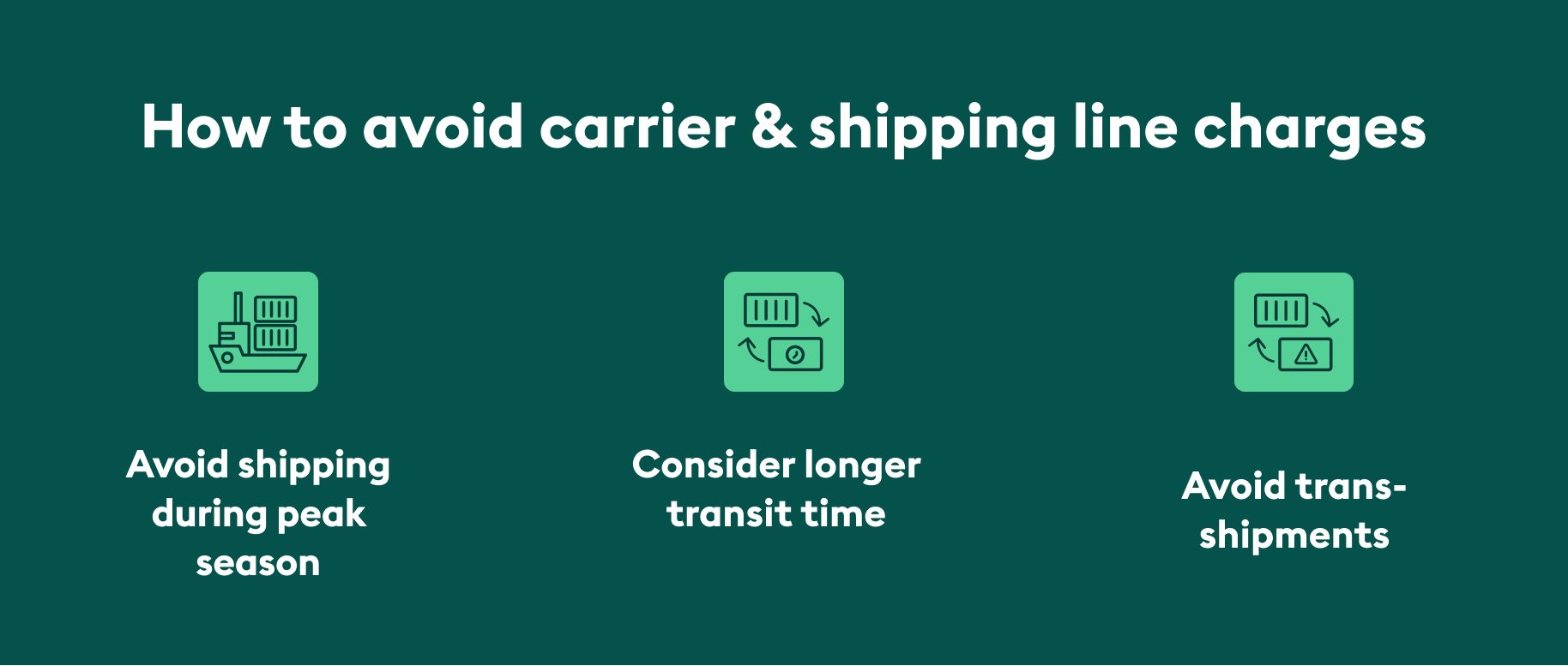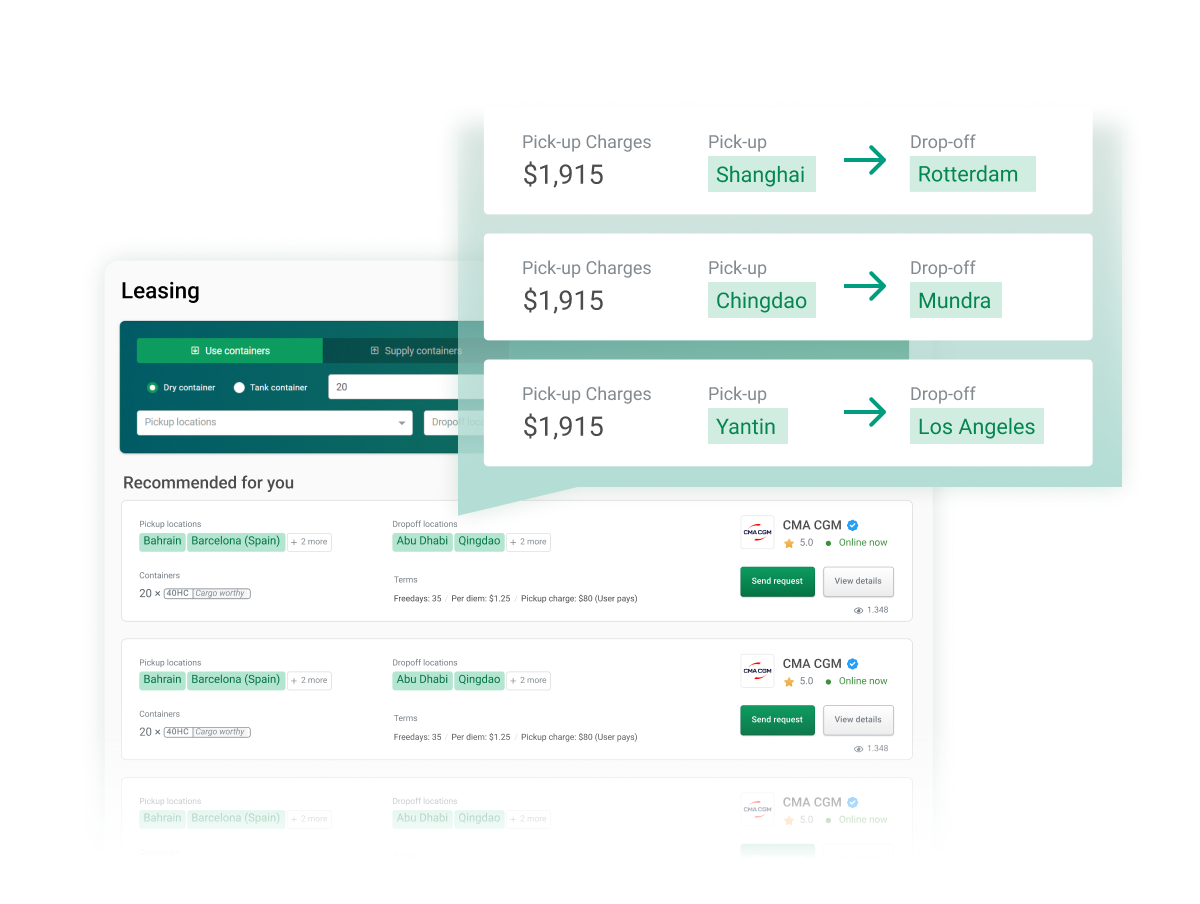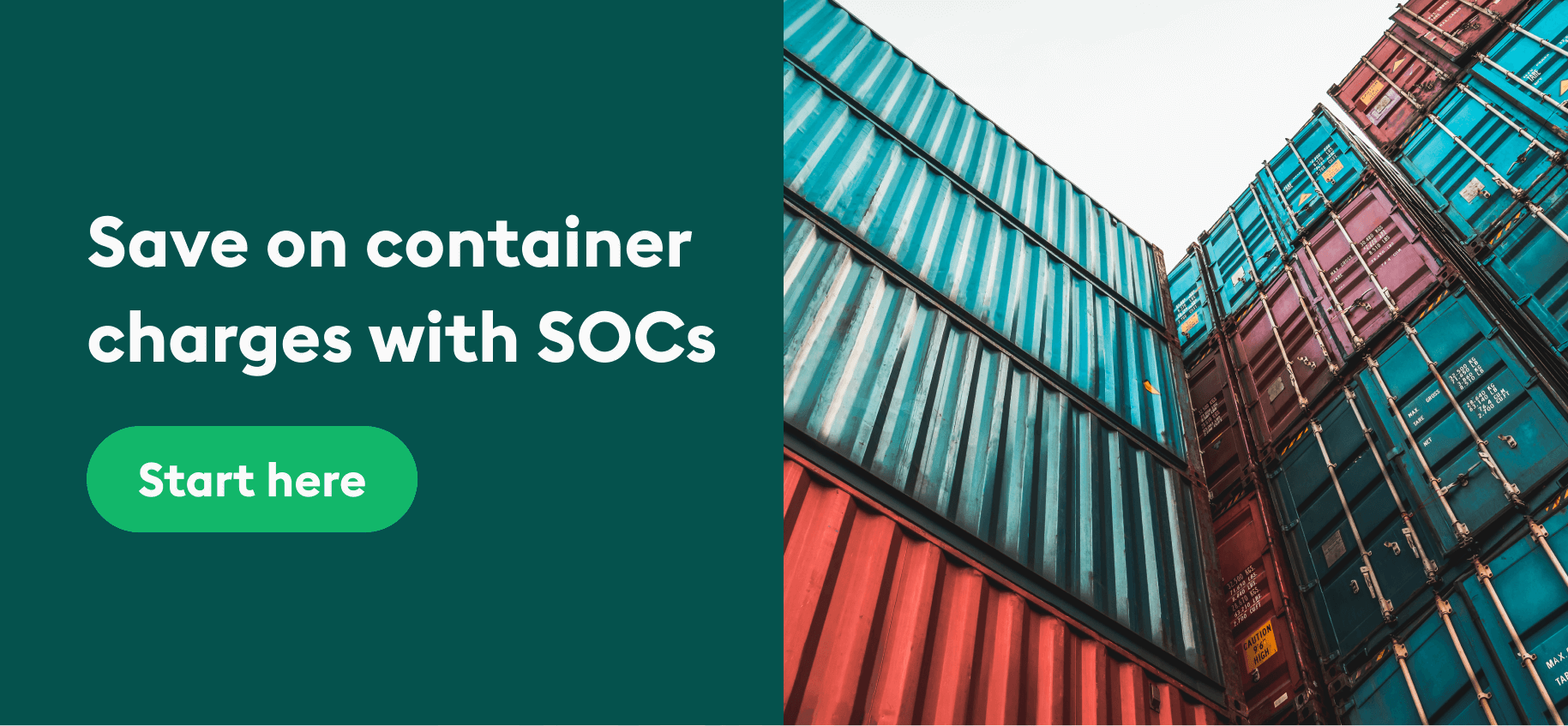Want a simple rundown of the container charges you can expect when shipping goods? Keep reading for the complete guide. Plus, we’ll tell you how you can dodge specific surcharges and save money with SOCs on Container xChange.
Most container fees are essential, and unfortunately, there’s no way around them if you’re shipping goods. Luckily, there are some charges that can be avoided, such as demurrage and detention. But how, you might be wondering? By using SOCs instead of COCs.
We’re an online marketplace for leasing and trading shipping containers. We have SOCs of all types and sizes available in 2,500+ locations around the globe. Want to see just how simple it is to find the equipment you need, and reduce container charges at the same time?
Try out our leasing search now to see for yourself. To begin, select ‘I want to use containers!’, type in your pick-up and drop-off locations, and hit ‘search’ to browse and compare available SOC offers right away.
What are container charges?
Container charges are container-specific fees paid by carriers and shippers at various stages of the shipping process.
Container charges may be levied by:
- Ports/terminals to carriers
- Carriers to shippers
- Ports/terminals to shippers
Here are some of the most common container charges you can expect to shell out during shipping:
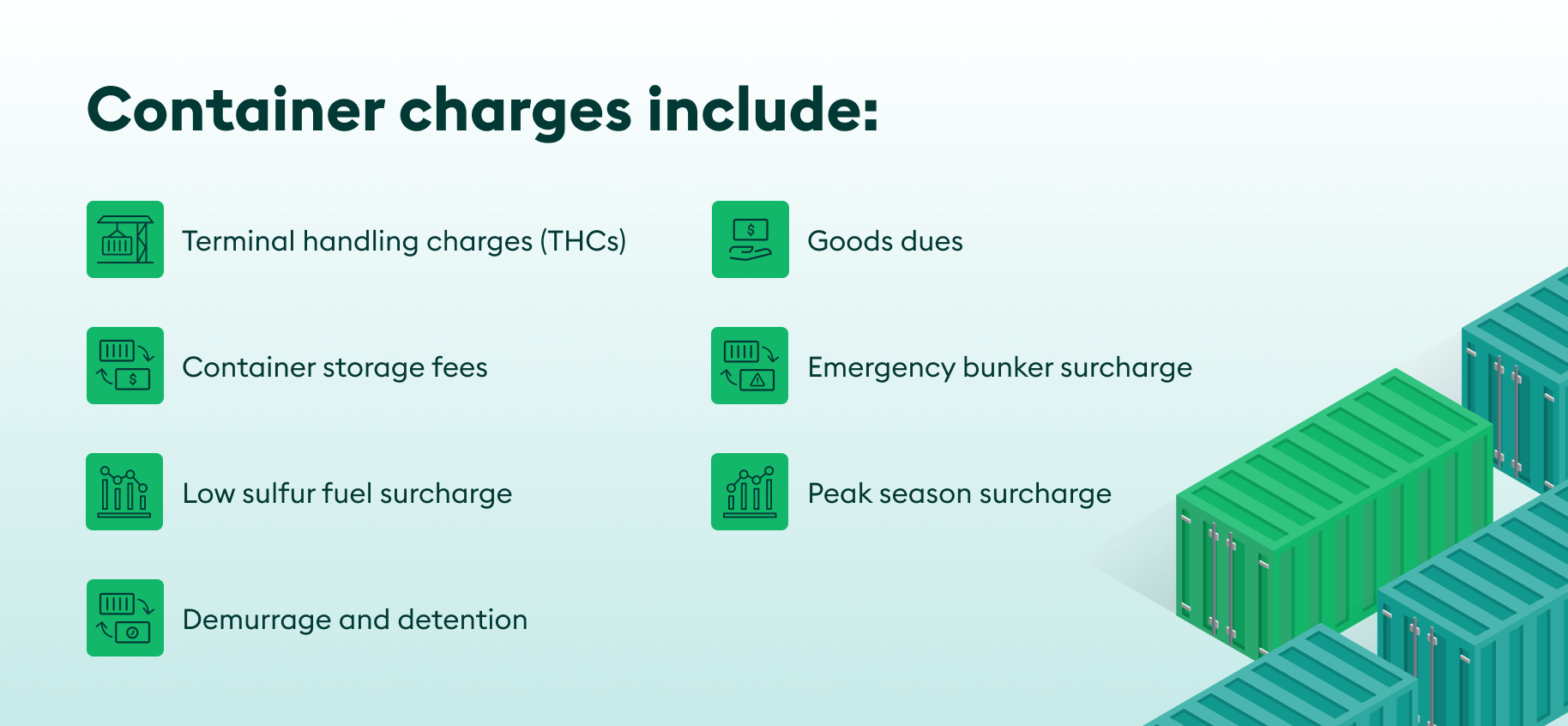
Let’s deep dive into each of these charges now.
Types of container charges you’ll pay at ports and terminals
Say you’ve got 10,000 bananas to ship. You aren’t going to manually load and unload them into the container yourself, now are you? Thanks to tech-savvy port terminals, cargo loading is done using highly advanced lifting machinery.
To operate efficiently, this equipment needs regular servicing, salaried staff and top-notch management. Along with this comes the taxes and fees that ports need to pay in order to keep operations running smoothly.
That’s why there are several shipping container charges that contribute to the investment and maintenance of these ports. Let’s have a look at some of the most common ones now.
Terminal handling charges
The Terminal Handling Charge (THC) is the fee you pay to terminals to get your containers loaded onto a vessel and discharged again at the final destination. It’s charged at the port of origin, transshipment port, and destination port.
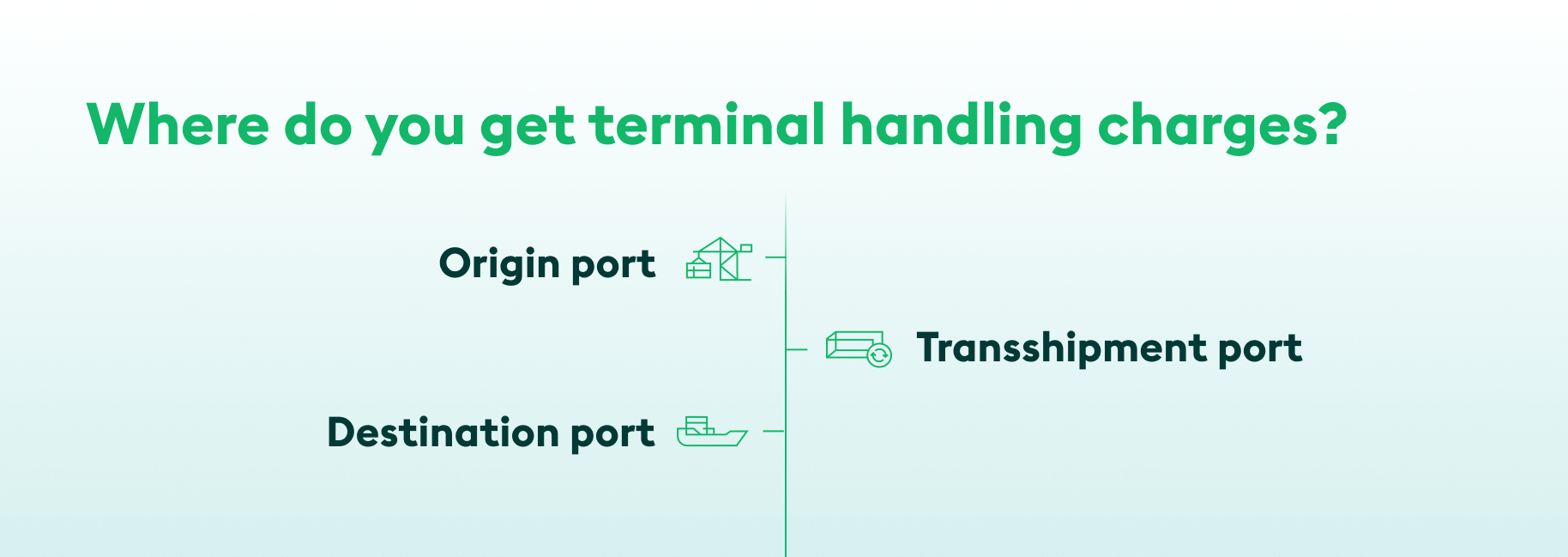
Most ports use different terminals to handle specific types of cargo. Each terminal has its own specialized equipment and accrues different local charges. Thus, terminal handling and port charges for containers vary considerably, even within the same country.
Goods dues
This is another charge you just can’t get around. Goods dues are applied to all goods loaded and unloaded from a ship. They’re also levied on goods that are transferred from one ship to another.
These rates are typically determined by the weight, volume and category of cargo. For example, if you’re transporting 10 cars, you’ll pay on a per-unit basis. But if you’re transporting 10 drinks cabinets, you’ll pay on a per-volume basis.
Container storage fee
Ready for some good news? One charge you can avoid is the container storage fee. At ports, you’ve got a certain number of free days to get your containers off the premises. If the containers are still in the terminal grounds after this period, you’ll have to pay for storage
So how can storage charges be dodged? Keep reading to found out.
How to avoid container charges for storage
Planning in advance is crucial if you want to avoid storage fees. It’s important to put buffers in place, so that you have extra time for unexpected obstacles or delays.
Another crucial aspect is tracking your shipments in real-time. This way, if containers are early or delayed, you’ll can act fast to re-negotiate fees, as well as communicate with truckers and other parties involved.
We’d also recommend leasing SOCs for one-way moves. Once your cargo has been unloaded at the final destination, you simply leave the equipment at the supplier’s depot/warehouse and move on. The supplier will sort out the rest. No fuss, no worrying about storage costs piling up.
Learn how 1500+ shipping companies are leasing SOCs one-way and saving money here.
Types of shipping line charges
When shipping cargo, there’s also a range of surcharges you pay directly to the shipping line. Let’s look at some of the main charges now.
Emergency bunker surcharge
The emergency bunker surcharge is an unpredictable fee. Carriers implement it when fuel prices rise drastically. Why? Because fuel hikes make it more expensive for carriers to move containers around. Therefore, you pay this fee to the carrier. And yes, you may have guessed already, you can do nothing to prevent paying it.
Also, external circumstances can further increase this charge. The recent war in Ukraine for example lead to huge hikes in fuel prices due to scarcity. This in turn lead shipping lines to impose a ‘bunker adjustment fee’.
Low-sulfur fuel surcharge
The-low sulfur charge is paid directly to the shipping line. Since 2020, the International Maritime Organization (IMO) has limited sulfur oxide (SOx) emissions on board ships outside of designated emission control areas to 0.50% m/m (mass by mass). Shipping lines levy the low sulfur fuel surcharge to cover the costs associated with this IMO cap.
Learn more about sustainable shipping here, as well as what else is being done to make the industry more environmentally friendly.
Peak season surcharge
Every year, carriers impose a peak season surcharge. This varies from region to region. In North America, for example, peak season occurs between July and October.
Carriers levy this charge on top of the base freight rate for shipments. If you want to avoid paying these fees, you’ll need to plan ahead.
How to avoid peak-season container shipping charge
Look at your data from previous years – do you have recurring customers that want shipments sent in the middle of peak season? Reach out to them and explain the risks that come with moving cargo during this period.
These may include rolled cargo, port congestion, chassisWhat is a chassis? Chassis, in freight & logistics, refers to a skeleton framework with wheels on it used to move containers. It is also called intermodal chassis or container chassis. Similar to ... More shortages and skyrocketing demurrage and detention fees. If you can’t avoid shipping during these times, you should at least consider longer transit times and avoid transshipment altogether. Why? Because transshipment can be extremely expensive, even during low season.
Demurrage and detention charges
Basically, when you use COCs, all equipment needs to be delivered back to the carrier/shipping line within a set number days. These are known as ‘free days’. When this doesn’t happen, demurrage and detention fees are charged on a daily basis.
Demurrage charges
You may not be able to collect your containers right after discharge. Which is why you’re allowed a ‘demurrage free’ period. This time frame completely depends on the destination your containers arrive at. If this ‘free period’ ends and your containers are still in the terminal or port area, you’ll need to pay demurrage.
So, if you’re charged a demurrage fee of $100 per day and you’ve got 10 containers, you’ll pay $1,000 per day. And if you don’t pick up your containers for 10 more days, that’s a $10,000 hole in your pocket! See how quickly these charges can add up?
Detention charges
Detention, on the other hand, is charged outside of the port or terminal area. In this case, you pick up the containers but don’t return them to the carrier on time. Both demurrage and detention charges are paid to the carrier/shipping line
Unlike most of the fees mentioned above, demurrage and detention can be avoided completely. Let’s explain how.
How SOCs help to reduce shipping surcharges and save you money
Did you know that demurrage and detention charges can add up to almost 20 times the container cost itself?
So, instead of using the shipping line/carrier’s equipment, you essentially ‘bring your own containers’ when using SOCs. In this way, you’re not obligated to return them within the strict time frame that shipping lines and carriers require. Plus, you can negotiate the free days with the SOC supplier, giving you the opportunity to work around unexpected delays.
Using SOCs means you have more flexibility and time to use the containers, especially if you are shipping to remote or distant locations. At last, you can have control over the movement of your cargo, as well as when the containers are picked up and returned.
Interested in leasing SOCs? Click here to find out just how easy it is to get them at the best rates on our platform. You’ll be saving on demurrage and detention fees and reducing your overall container charges in no time at all.
Use SOCs & reduce surcharges with Container xChange
Want to start finding SOCs to dodge demurrage and detention fees right away? Great! We’ll walk you through the four easy steps to getting the equipment you need below.
Choose the container type, size and condition
First things first, you’ll need to choose the type, shipping container size and condition of the containers you need. As soon as you’ve decided on all of these factors, add your criteria into the leasing search.
Want to get an idea of what you should be shelling out before you start looking for containers? Find out more in this blog post.
Browse container offers
Once you’ve decided on your criteria, it’s time to start browsing offers. Luckily, you can compare multiple options at the same time to make sure you’re getting the best deal on xChange.
Negotiate a deal
Now it’s time to negotiate directly with the supplier. This includes agreeing on the per diem (daily) charges and number of free days you’re happy with, so that you can avoid extra fees.
Make safe payments
Once you’ve settled all of the above details, it’s time to make the payment. Again, do this directly on xChange using the xChange Wallet. At last, 100% safe and secure payments all in one place
Ready to sign up as a member on xChange? Here are just a few of the benefits you’ll be able to enjoy
- 50,000+ containers available in over 2,500 locations
- Work with vetted and reliable partners
- Safe payment handling
- Negotiable rates
- 0% commission on deal
Want to get SOCs and avoid unnecessary surcharges? Click below to schedule a free demo with one of our friendly experts today. They’ll give you a sneak peek of the platform and answer any questions you may have. So, what are you waiting for? It’s time to get SOCs and start dodging container charges for good.
Container charges: Common FAQs
How are container charges calculated?
Container charges are determined by a number of factors including the cargo type, mode of transport, weight of goods, and the distance and popularity of the delivery destination from the port of origin.
What are container port charges?
Container port charges are the fees that port authorities charge for the use of facilities and services at a port. Shipping operators and their customers pay this charge.
What is a pre-load charge on a shipping container?
The pre-load charge on a shipping container is charged as a percentage of the sea freight. It’s a charge for handling containers at the port of origin or terminal before being loaded onboard a vessel.
What is the container cleaning fee?
A container cleaning fee is charged by a shipping line for cleaning a container once it's been returned to the depot.


